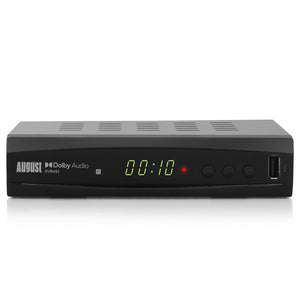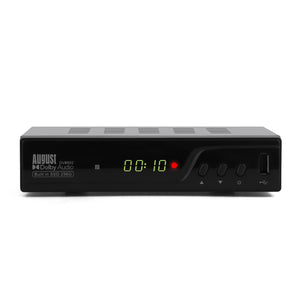Apologies for the stark nature of the title, but seriously there's a very important thing to check when you are planning to watch Freeview on your Smart TV:
Smart TVs have worked their way in to living rooms across the nation and offer fantastic online viewing experiences like Netflix, iPlayer, Amazon Prime Video and more. However, if you want "TV" in the standard, free-to-air sense that might be less obvious.
Before buying a set top box or a USB Freeview stick make sure you've double and triple-checked your Smart TV!
Do Smart TV's Have Freeview?
The reason it's so important to check your TV before making a move is that Smart TV's may well have what's called an inbuilt tuner. A TV Tuner is a device which is able to see the broadcast data from an aerial and actually decode it into useful information for your TV, presenting you with colours and sounds to create the scene.
Without a TV tuner and an aerial, even a Smart TV won't play any Freeview signal!
Therefore, the first step is the check your TV manual and ports on the rear of the TV for mention of Digital Coaxial Aerial connection, or Radio Frequency input. If a TV accepts an aerial connection directly and is new enough to be "Smart", you can be almost certain that this will be for Freeview.
If you see an aerial port but are unsure then check if it matches a coaxial aerial cable from a wire aerial, as you may be mixing up Freeview with Freesat!
If you do have an inbuilt Freeview tuner you won't need an external box unless you want to record Live TV to physical storage like USB and external drives.

Does a Smart TV Need an Aerial?
Even if your Smart TV has inbuilt Freeview tuning, you still need to receive the signal! Because of this, both TV's with and without an inbuilt tuner will need an aerial connector.
The only way to get TV without an aerial at all is streaming and IPTV, which don't provide the same live broadcast experience as Live DTT TV. While Freely exists, and is meant to be the Internet-Accessed version of Live Freeview, it is currently limited to just 20 - 30 channels and only on specific branded TVs, so doesn't factor in too much to needing an aerial for your smart TV.
The upshot is that even if your TV has an inbuilt tuner, internet access, even Freely, to access the full range of channels you will always need an aerial for a smart TV.
Adding Freeview to a Smart TV
If your Smart TV is an IPTV and hasn't been built for any terrestrial TV tuning, have no fear, you can add a TV tuner externally and enjoy all the Free-to-Air live broadcasts you love on your fancy new TV.
The components for accessing and watching Freeview are simply an aerial, a decoder / tuner, and a screen. In this case your Smart TV doesn't have a tuner, but it can still act as the screen. Your rooftop aerial may well already be picking up Freeview signals, so the final piece of the puzzle is a tuner!
Tuning boxes come in a range of sizes and shapes. The vital thing is that to access Freeview you will need a Freeview Set Top Box not a Freesat box. A Set Top Box plugs into your aerial, and then outputs the video through HDMI to your Smart TV. That way you can watch standard TV on any HDMI device, be it a Smart TV or a computer monitor.
If you're trying to save on tech after investing in a Smart TV then the August DVB502 is a small, compact, budget SSD Set Top Box with a Dual-Tuner which can tune to two channels simultaneously (So you can watch and record). Pick up a USB stick* or use the internal SSD and you can record TV from your Smart TV, too!
*Please Note USB sticks may need reformatting to be compatible with certain recorders.
In a world of streaming, cloud-based storage and subscription-based monetisation you can reclaim ownership of your entertainment by using a Set Top Box and making physical recordings. If your Smart TV disconnects or apps won't work, simply switch to your HDMI source and watch your Set Top TV anytime.






Leave a comment